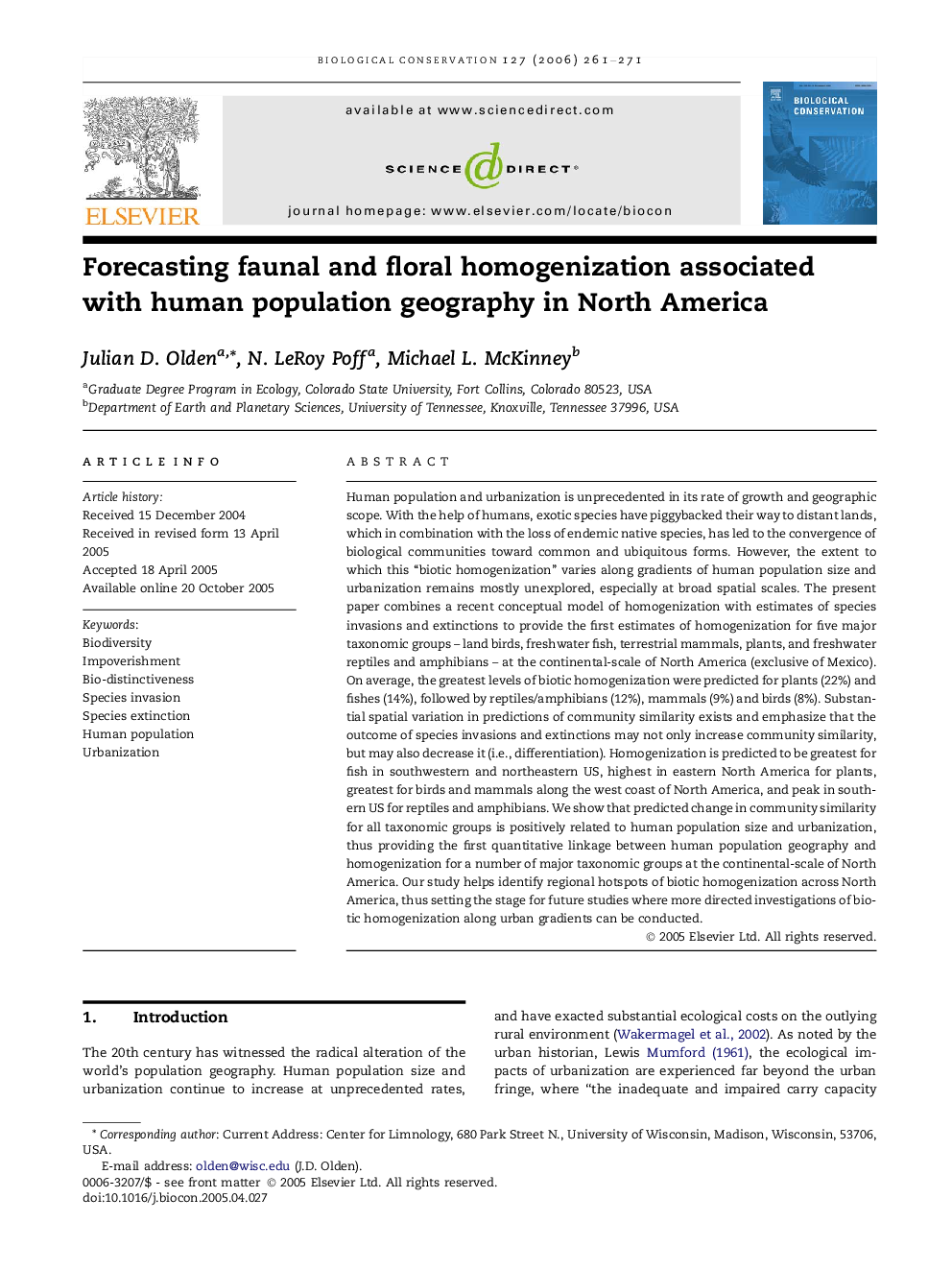| کد مقاله | کد نشریه | سال انتشار | مقاله انگلیسی | نسخه تمام متن |
|---|---|---|---|---|
| 4387920 | 1304638 | 2006 | 11 صفحه PDF | دانلود رایگان |

Human population and urbanization is unprecedented in its rate of growth and geographic scope. With the help of humans, exotic species have piggybacked their way to distant lands, which in combination with the loss of endemic native species, has led to the convergence of biological communities toward common and ubiquitous forms. However, the extent to which this “biotic homogenization” varies along gradients of human population size and urbanization remains mostly unexplored, especially at broad spatial scales. The present paper combines a recent conceptual model of homogenization with estimates of species invasions and extinctions to provide the first estimates of homogenization for five major taxonomic groups – land birds, freshwater fish, terrestrial mammals, plants, and freshwater reptiles and amphibians – at the continental-scale of North America (exclusive of Mexico). On average, the greatest levels of biotic homogenization were predicted for plants (22%) and fishes (14%), followed by reptiles/amphibians (12%), mammals (9%) and birds (8%). Substantial spatial variation in predictions of community similarity exists and emphasize that the outcome of species invasions and extinctions may not only increase community similarity, but may also decrease it (i.e., differentiation). Homogenization is predicted to be greatest for fish in southwestern and northeastern US, highest in eastern North America for plants, greatest for birds and mammals along the west coast of North America, and peak in southern US for reptiles and amphibians. We show that predicted change in community similarity for all taxonomic groups is positively related to human population size and urbanization, thus providing the first quantitative linkage between human population geography and homogenization for a number of major taxonomic groups at the continental-scale of North America. Our study helps identify regional hotspots of biotic homogenization across North America, thus setting the stage for future studies where more directed investigations of biotic homogenization along urban gradients can be conducted.
Journal: Biological Conservation - Volume 127, Issue 3, January 2006, Pages 261–271